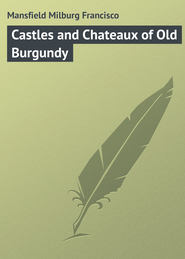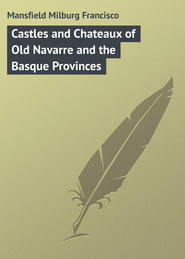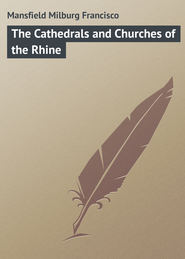По всем вопросам обращайтесь на: info@litportal.ru
(©) 2003-2024.
✖
Dumas' Paris
Настройки чтения
Размер шрифта
Высота строк
Поля
One edition of his work comprises two hundred and seventy-seven volumes, and within the year a London publisher has announced some sixty volumes “never before translated.” Dumas himself has said that he was the author of over seven hundred works.
In point of time his romances go back to the days of the house of Valois and the Anglo-French wars (1328), and to recount their contents is to abstract many splendid chapters from out the pages of French history.
It would seem as though nearly every personage of royalty and celebrity (if these democratic times will allow the yoking together of the two; real genuine red republicans would probably link royalty and notoriety) stalked majestically through his pages, and the record runs from the fourteenth nearly to the end of the nineteenth century, with the exception of the reign of Louis XI.
An ardent admirer of Sir Walter Scott has commented upon this lapse as being accounted for by the apparent futility of attempting to improve upon “Quentin Durward.” This is interesting, significant, and characteristic, but it is not charitable, generous, or broad-minded.
CHAPTER II.
DUMAS’ EARLY LIFE IN PARIS
At fifteen (1817), Dumas entered the law-office of one Mennesson at Villers-Cotterets as a saute-ruisseau (gutter-snipe), as he himself called it, and from this time on he was forced to forego what had been his passion heretofore: bird-catching, shooting, and all manner of woodcraft.
When still living at Villers-Cotterets Dumas had made acquaintance with the art of the dramatist, so far as it was embodied in the person of Adolphe de Leuven, with whom he collaborated in certain immature melodramas and vaudevilles, which De Leuven himself took to Paris for disposal.
“No doubt managers would welcome them with enthusiasm,” said Dumas, “and likely enough we shall divert a branch of that Pactolus River which is irrigating the domains of M. Scribe” (1822).
Later on in his “Mémoires” he says: “Complete humiliation; we were refused everywhere.”
From Villers-Cotterets the scene of Dumas’ labours was transferred to Crépy, three and a half leagues distant, a small town to which he made his way on foot, his belongings in a little bundle “not more bulky than that of a Savoyard when he leaves his native mountains.”
In his new duties, still as a lawyer’s clerk, Dumas found life very wearisome, and, though the ancient capital of the Valois must have made an impress upon him, – as one learns from the Valois romances, – he pined for the somewhat more free life which he had previously lived; or, taking the bull by the horns, deliberated as to how he might get into the very vortex of things by pushing on to the capital.
As he tritely says, “To arrive it was necessary to make a start,” and the problem was how to arrive in Paris from Crépy in the existing condition of his finances.
By dint of ingenuity and considerable activity Dumas left Crépy in company with a friend on a sort of a runaway holiday, and made his third entrance into Paris.
It would appear that Dumas’ culinary and gastronomic capabilities early came into play, as we learn from the “Mémoires” that, when he was not yet out of his teens, and serving in the notary’s office at Crépy, he proposed to his colleague that they take this three days’ holiday in Paris.
They could muster but thirty-five francs between them, so Dumas proposed that they should shoot game en route. Said Dumas, “We can kill, shall I say, one hare, two partridges, and a quail… We reach Dammartin, get the hinder part of our hare roasted and the front part jugged, then we eat and drink.” “And what then?” said his friend. “What then? Bless you, why we pay for our wine, bread, and seasoning with the two partridges, and we tip the waiter with the quail.”
The journey was accomplished in due order, and he and his friend put up at the Hôtel du Vieux-Augustins, reaching there at ten at night.
In the morning he set out to find his collaborateur De Leuven, but the fascination of Paris was such that it nearly made him forswear regard for the flight of time.
He says of the Palais Royale: “I found myself within its courtyard, and stopped before the Theatre Français, and on the bill I saw:
“‘Demain, Lundi
Sylla
Tragédie dans cinq Actes
Par M. de Jouy’
“I solemnly swore that by some means or other … I would see Sylla, and all the more so because, in large letters, under the above notice, were the words, ‘The character of Sylla will be taken by M. Talma.’”
In his “Mémoires” Dumas states that it was at this time he had the temerity to call on the great Talma. “Talma was short-sighted,” said he, “and was at his toilet; his hair was close cut, and his aspect under these conditions was remarkably un-poetic… Talma was for me a god – a god unknown, it is true, as was Jupiter to Semele.”
And here comes a most delicious bit of Dumas himself, Dumas the egotist:
“Ah, Talma! were you but twenty years younger or I twenty years older! I know the past, you cannot foretell the future… Had you known, Talma, that the hand you had just touched would ultimately write sixty or eighty dramas … in each of which you would have found the material for a marvellous creation…”
Dumas may be said to have at once entered the world of art and letters in this, his third visit to Paris, which took place so early in life, but in the years so ripe with ambition.
Having seen the great Talma in Sylla, in his dressing-room at the Theatre Français, he met Delavigne, who was then just completing his “Ecole des Viellards,” Lucien Arnault, who had just brought out “Regulus;” Soumet, fresh from the double triumph of “Saul” and “Clymnestre;” here, too, were Lemercier, Delrien, Viennet, and Jouy himself; and he had met at the Café du Roi, Theadlon, Francis, Rochefort, and De Merle; indeed by his friend De Leuven he was introduced to the assemblage there as a “future Corneille,” in spite of the fact that he was but a notary’s clerk.
Leaving what must have been to Dumas the presence, he shot a parting remark, “Ah, yes, I shall come to Paris for good, I warrant you that.”
In “The Taking of the Bastille” Dumas traces again, in the characters of Pitou and old Father Billot, much of the route which he himself took on his first visit to Paris. The journey, then, is recounted from first-hand information, and there will be no difficulty on the part of any one in tracing the similarity of the itinerary.
Chapter I., of the work in question, brings us at once on familiar ground, and gives a description of Villers-Cotterets and its inhabitants in a manner which shows Dumas’ hand so unmistakably as to remove any doubts as to the volume of assistance he may have received from others, on this particular book at least.
“On the borders of Picardy and the province of Soissons, and on that part of the national territory which, under the name of the Isle of France, formed a portion of the ancient patrimony of our kings, and in the centre of an immense crescent, formed by a forest of fifty thousand acres, which stretches its horns to the north and south, rises, almost buried amid the shades of a vast park planted by François I. and Henri II., the small city of Villers-Cotterets. This place is celebrated from having given birth to Charles Albert Demoustier, who, at the period when our present history commences, was there writing his Letters to Emilie on Mythology, to the unbounded satisfaction of the pretty women of those days, who eagerly snatched his publications from each other as soon as printed.
“Let us add, to complete the poetical reputation of this little city, whose detractors, notwithstanding its royal château and its two thousand four hundred inhabitants, obstinately persist in calling it a mere village – let us add, we say, to complete its poetical reputation, that it is situated at two leagues distance from Laferte-Milan, where Racine was born, and eight leagues from Château-Thierry, the birthplace of La Fontaine.
“Let us also state that the mother of the author of ‘Britannicus’ and ‘Athalie’ was from Villers-Cotterets.
“But now we must return to its royal château and its two thousand four hundred inhabitants.
“This royal château, begun by François I., whose salamanders still decorate it, and finished by Henri II., whose cipher it bears entwined with that of Catherine de Medici and encircled by the three crescents of Diana of Poictiers, after having sheltered the loves of the knight king with Madame d’Etampes, and those of Louis Philippe of Orleans with the beautiful Madame de Montesson, had become almost uninhabited since the death of this last prince; his son, Philippe d’Orleans, afterward called Egalité, having made it descend from the rank of a royal residence to that of a mere hunting rendezvous.
“It is well known that the château and forest of Villers-Cotterets formed part of the appanage settled by Louis XIV. on his brother Monsieur, when the second son of Anne of Austria married the sister of Charles II., the Princess Henrietta of England.
“As to the two thousand four hundred inhabitants of whom we have promised our readers to say a word, they were, as in all localities where two thousand four hundred people are united, a heterogeneous assemblage.
“Firstly: Of the few nobles, who spent their summers in the neighbouring châteaux and their winters in Paris, and who, mimicking the prince, had only a lodging-place in the city.
“Secondly: Of a goodly number of citizens, who could be seen, let the weather be what it might, leaving their houses after dinner, umbrella in hand, to take their daily walk, a walk which was regularly bounded by a deep, invisible ditch which separated the park from the forest, situated about a quarter of a league from the town, and which was called, doubtless on account of the exclamation which the sight of it drew from the asthmatic lungs of the promenaders, satisfied at finding themselves not too much out of breath, the ‘Ha, ha!’
“Thirdly: Of a considerably greater number of artisans who worked the whole of the week and only allowed themselves to take a walk on the Sunday; whereas their fellow townsmen, more favoured by fortune, could enjoy it every day.
“Fourthly and finally: Of some miserable proletarians, for whom the week had not even a Sabbath, and who, after having toiled six days in the pay of the nobles, the citizens, or even of the artisans, wandered on the seventh day through the forest to gather up dry wood or branches of the lofty trees, torn from them by the storm, that mower of the forest, to whom oak-trees are but ears of wheat, and which it scattered over the humid soil beneath the lofty trees, the magnificent appanage of a prince.
“If Villers-Cotterets (Villerii ad Cotiam Retiæ) had been, unfortunately, a town of sufficient importance in history to induce archæologists to ascertain and follow up its successive changes from a village to a town and from a town to a city – the last, as we have said, being strongly contested, they would certainly have proved this fact, that the village had begun by being a row of houses on either side of the road from Paris to Soissons; then they would have added that its situation on the borders of a beautiful forest having, though by slow degrees, brought to it a great increase of inhabitants, other streets were added to the first, diverging like the rays of a star and leading toward other small villages with which it was important to keep up communication, and converging toward a point which naturally became the centre, that is to say, what in the provinces is called Le Carrefour, – and sometimes even the Square, whatever might be its shape, – and around which the handsomest buildings of the village, now become a burgh, were erected, and in the middle of which rises a fountain, now decorated with a quadruple dial; in short, they would have fixed the precise date when, near the modest village church, the first want of a people, arose the first turrets of the vast château, the last caprice of a king; a château which, after having been, as we have already said, by turns a royal and a princely residence, has in our days become a melancholy and hideous receptacle for mendicants under the direction of the Prefecture of the Seine, and to whom M. Marrast issues his mandates through delegates of whom he has not, nor probably will ever have, either the time or the care to ascertain the names.”
The last sentence seems rather superfluous, – if it was justifiable, – but, after all, no harm probably was done, and Dumas as a rule was never vituperative.
Continuing, these first pages give us an account of the difficulties under which poor Louis Ange Pitou acquired his knowledge of Latin, which is remarkably like the account which Dumas gives in the “Mémoires” of his early acquaintance with the classics.
When Pitou leaves Haramont, his native village, and takes to the road, and visits Billot at “Bruyere aux Loups,” knowing well the road, as he did that to Damploux, Compiègne, and Vivières, he was but covering ground equally well known to Dumas’ own youth.
Finally, as he is joined by Billot en route for Paris, and takes the highroad from Villers-Cotterets, near Gondeville, passing Nanteuil, Dammartin, and Ermenonville, arriving at Paris at La Villette, he follows almost the exact itinerary taken by the venturesome Dumas on his runaway journey from the notary’s office at Crépy-en-Valois.
Crépy-en-Valois was the near neighbour of Villers-Cotterets, which jealously attempted to rival it, and does even to-day. In “The Taking of the Bastille” Dumas only mentions it in connection with Mother Sabot’s âne, “which was shod,” – the only ass which Pitou had ever known which wore shoes, – and performed the duty of carrying the mails between Crépy and Villers-Cotterets.
At Villers-Cotterets one may come into close contact with the château which is referred to in the later pages of the “Vicomte de Bragelonne.” “Situated in the middle of the forest, where we shall lead a most sentimental life, the very same where my grandfather,” said Monseigneur the Prince, “Henri IV. did with ‘La Belle Gabrielle.’”











